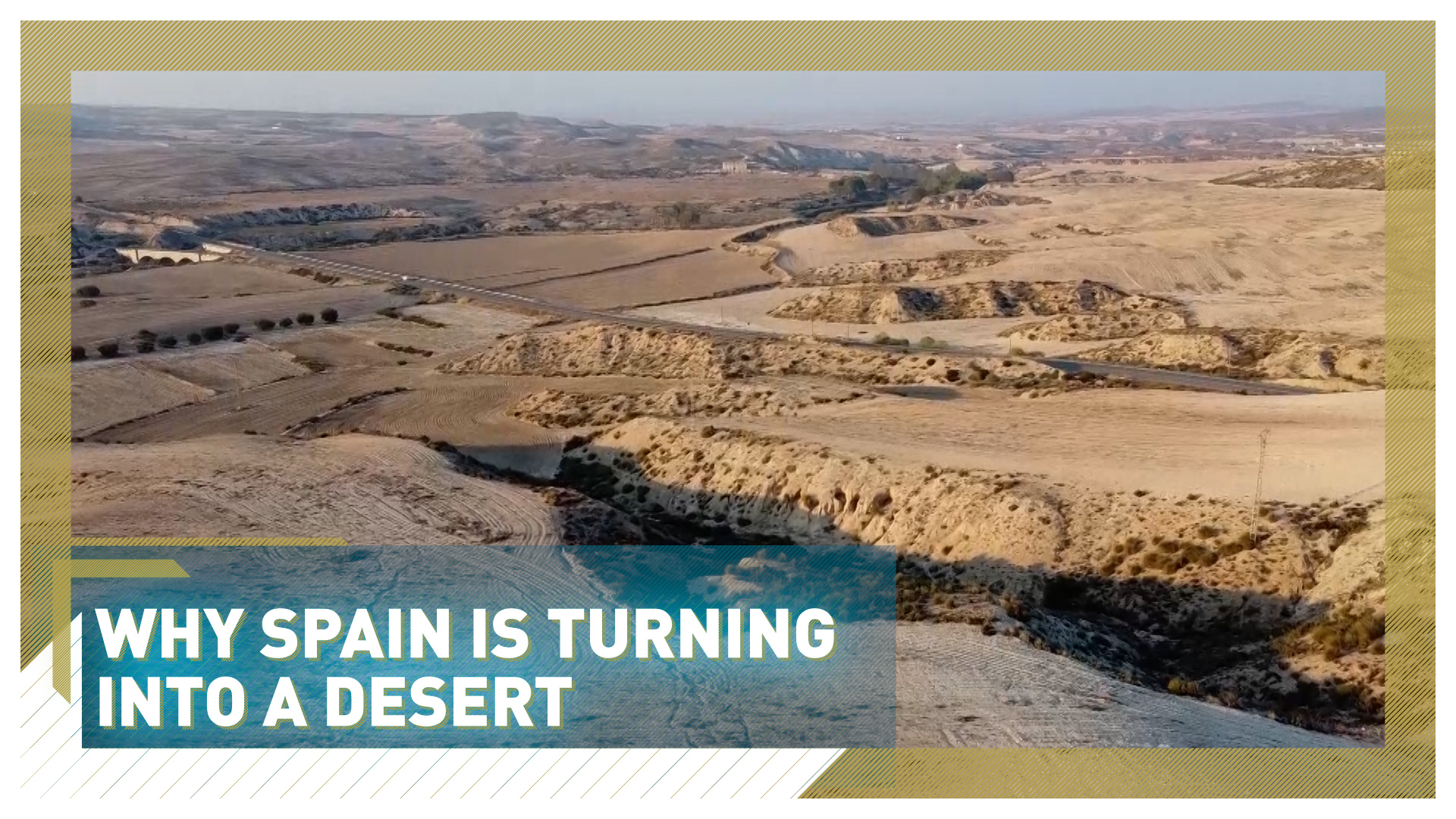02:13

Desertification is a growing problem across Europe - driven by a combination of over-farming and climate change.
One of the worst-hit regions is southern Spain, home to the country's $60 billion agriculture industry.
Spain's south suffers from the lack of frequent rainfall, it is one of the driest areas in Europe, and it is getting even drier.
So when you add a highly industrialized agriculture sector with its heavy use of natural resources, the rapid desertification of the land is the result, according to Miguel Angel Gomez, regenerative agriculture coordinator, for eco-business association AlVelAl.
"The southeast of Spain has always been the most arid area of Europe, and with climate change, the difference with other areas is even bigger. So we try, with different methods, to save and use any rain we get in the most efficient way," he told CGTN Europe.
Regenerating The Soil
CGTN first met Gomez two years ago. His work for AlVelAl has centered on a process known as regenerative agriculture, using older, less intensive farming methods, allowing the land to rehabilitate.
Without regenerative agriculture, climate change experts believe desertification could affect 70 percent of Spain's landscape by the end of the century.
Even now, Spain is one of the world's worst-affected countries, with a fifth of its land already suffering from desertification.
But it is a problem faced by regions and countries all over the world, including the U.S., Italy, Greece, North Africa and the Middle East.

AlVelAl aim to provide job opportunities for local farmers as part of the regeneration project./AP/Alvaro Barrientos
AlVelAl aim to provide job opportunities for local farmers as part of the regeneration project./AP/Alvaro Barrientos
Local Solutions For a Global issue
For Gomez, the globalization of agriculture has been a major factor.
His solution is to think smaller.
He said: "We need to look at agriculture in a very local way. We need to use crops that are appropriate for a specific area. They need to be able to adapt to the climate in their region. To the soil, the atmosphere and the methods of farming in that area."
Finding local solutions to this global issue is one way to help reduce the impact that climate change has here in one of the driest regions in Europe.
Cover image: Rahul Pathak/CGTN Europe

